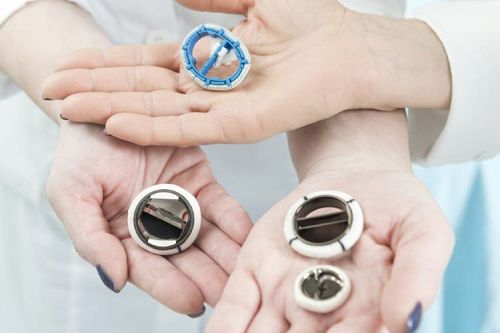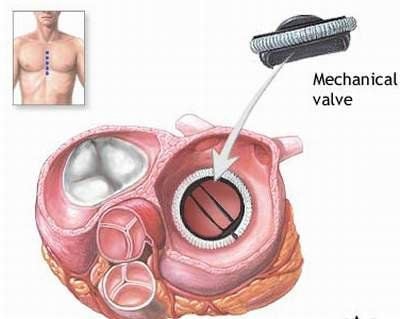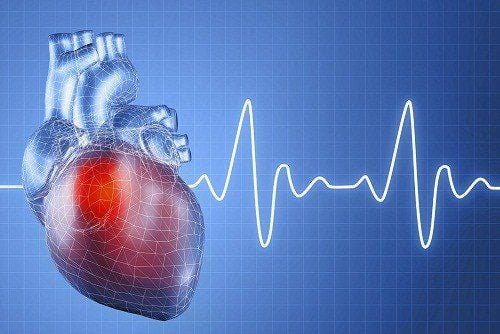This is an automatically translated article.
Cardiovascular disease always poses challenges for both patients and medical professionals, especially among heart valve abnormalities. For people with damaged, degenerative heart valves that need valve replacement surgery, the same question will be asked: "who needs to replace the heart valve and what are the conditions for heart valve replacement?".
1. Heart valve system and heart valve abnormalities
The heart has 4 valve systems including: mitral valve (separating left atrium and left ventricle), tricuspid valve (separating right atrium and right ventricle), aortic valve (separating heart left ventricle and aorta), pulmonary valve (separating right ventricle and pulmonary artery). Any valve can become narrowed or open, causing hemodynamic changes long before clinical symptoms appear. When the valve is narrowed (that is, the valve leaf does not open completely), the blood cannot pass completely, causing circulatory stagnation, dilation of the heart chambers in the long run, causing heart failure. When the valve is open (ie the valve leaf does not close tightly), blood does not flow in one direction but flows back to the heart chamber, so the heart has to work harder for a long time, leading to dilated heart chambers and heart failure.
Heart valve abnormalities:
Aortic regurgitation: Failure to close the aortic valve tightly causes backflow of blood from the aorta to the left ventricle during diastole. Aortic stenosis: Will obstruct flow. Blood from the left ventricle to the aorta during systole Mitral regurgitation: Failure to close the mitral valve tightly causes blood flow from the left ventricle (LV) into the left atrium during systole. Mitral stenosis: Mitral stenosis prevents blood flow from the left atrium to the left ventricle Mitral valve prolapse: Prolapse of the leaflets of the mitral valve into the left atrium during systolic Pulmonary valve prolapse: Closes none Pulmonary valve occlusion produces blood flow from the pulmonary artery into the right ventricle during diastole Pulmonary stenosis: Narrowing of the pulmonary outflow tract that impedes blood flow from the right ventricle to the pulmonary artery during systole Tricuspid regurgitation: Failure to close properly of the tricuspid valve causing blood flow from the right ventricle to the right atrium during systole Cardiac examination includes clinical examination combined with echocardiography. 2-D ultrasound technology helps to create anatomical images of the heart. Doppler echocardiography evaluates gradients and flow.
Evaluation of patients with heart valve damage includes: Electrocardiogram (detects changes in heart rate and chambers), chest X-ray (detects abnormalities in the heart chambers and pathologies of the lungs) .
2. When to replace the heart valve? What types of heart valves are there?
Depending on the degree of stenosis or regurgitation and the impact caused by the valve damage, the patient may be prescribed different treatment methods. If the damage is mild to moderate, the patient may only need drug treatment, but it is necessary to closely monitor the progress of the disease. But when the degree of stenosis is severe, the patient will have to intervene with techniques such as percutaneous valve replacement or valve repair surgery, heart valve replacement (this is a common method).
Surgery to repair or replace the heart valve is indicated when the heart valves are severely damaged, the chambers of the heart have dilated, affecting the function of the heart (heart failure). Heart valve surgery will help treat the root of the disease, reduce symptoms, prevent cardiac arrhythmias and complications such as cerebrovascular accident, pulmonary infarction, renal embolism... patient.
Types of heart valves used today to replace damaged heart valves include: mechanical heart valves, biological heart valves and autologous heart valves. Experts based on age, disease status (degree of heart valve and heart muscle damage), monitoring and treatment conditions after heart valve replacement surgery to advise on the appropriate valve type for each patient.
Mechanical heart valve:
Mechanical valve is an artificial valve that is composed of carbon or titanium. Advantages: Mechanical valves have a high durability (from 20 years) if the patient adheres to the postoperative treatment according to the instructions of the doctor. Therefore, mechanical valves are recommended for young people to avoid frequent valve replacement. Mechanical valves are cheaper than biological valves. Cons: Patients need to take anticoagulants for life to prevent the risk of thrombosis (clogged valves, cerebral embolism, renal embolism, limb embolism...). When taking anticoagulants (vitamin K antagonists) patients have to have their INR checked periodically to adjust the dose and are also more prone to bleeding than people who don't take them. In addition, for pregnant women, the drug also increases the risk of birth defects in the first 3 months of pregnancy. Biological Heart Valves:
Biological valves are manufactured from animal heart valves (swine or cow), without components that cause transplant rejection. Advantages: Patients do not have to take anticoagulants for life (usually only 3-6 months after surgery). Cons: Being a natural tissue, the valve will gradually degenerate over time, affecting the function of the leaflets, possibly re-narrowing or regurgitating the valve. The average lifespan of a biological valve is 8 to 10 years. The degree of valve degeneration depends on the pressure on the valve and age; In young people, the rate of degeneration is faster, especially in pregnant women, so biological valves are often indicated in patients over 60 years old. Mechanical valves have a higher rate of bleeding complications while biological valves are more likely to require re-intervention. After surgery, both valve types should be evaluated using echocardiography over 30 days, 1 year, and every 1 to 3 years thereafter.
Autologous heart valve:
The technique of replacing the heart valve with an autologous valve was born from the Ozaki method in Japan, using the patient's own pericardium to regenerate the aortic valve. This is a huge step forward, bringing many advantages such as:
You do not need to use anticoagulants for life. Compared with artificial valves, autologous valves help reduce the risk of bleeding and infection after surgery. Timing of heart valves lasts almost a lifetime. In young patients, the rate of not having to re-operate after 10 years for biological valves is 85%, while if applying Ozaki technique up to 95% - 98%. Reduce treatment costs for patients because there is no need to buy artificial valves and re-surgery.
3. What are the conditions for heart valve replacement?
For mechanical valve replacement: Usually used in patients who are not contemplating pregnancy who meet one or more of the following criteria:
Already taking a vitamin K antagonist (eg, treating atrial fibrillation) and the patient is complying good prime treatment. Patients under 55 years old (for aortic valve replacement). Patients under 70 years old (for mitral valve replacement). For biological valve replacement:
People over 60 years old are given priority to replace biological heart valves over mechanical artificial heart valves, because the rate of valve degeneration is slower than that of young patients. Women who plan to give birth in the near future, however, need to explain to the patient clearly that the degeneration of biological heart valves occurs more quickly. Patients who do not have enough conditions for monitoring and good medical care, especially the use of anticoagulants after surgery, such as ethnic minorities; remote areas, islands; patients with intellectual disability,... Patients with a history of allergy or contraindication to anticoagulants such as a disease that causes bleeding: Brain hemorrhage, stomach bleeding... For valve replacement Autologous heart:
This method is especially suitable for patients who are women planning to become pregnant, children in the developing stage, patients who do not want to be dependent on anticoagulants after surgery and blood sugar secretion. Reduce the cost of re-surgery treatment. Advanced treatment techniques require surgeons to be well-trained, thoroughly trained, and highly skilled to perform meticulous and precise techniques. Above are some of the most up-to-date information on conditions and indications for heart valve replacement. This is an advanced treatment method, which must be performed by a leading professional with high expertise, proficiency and thorough training. Therefore, to improve the effectiveness of treatment, patients need to go to the right medical facility for examination and appropriate treatment advice.
Please dial HOTLINE for more information or register for an appointment HERE. Download MyVinmec app to make appointments faster and to manage your bookings easily.













